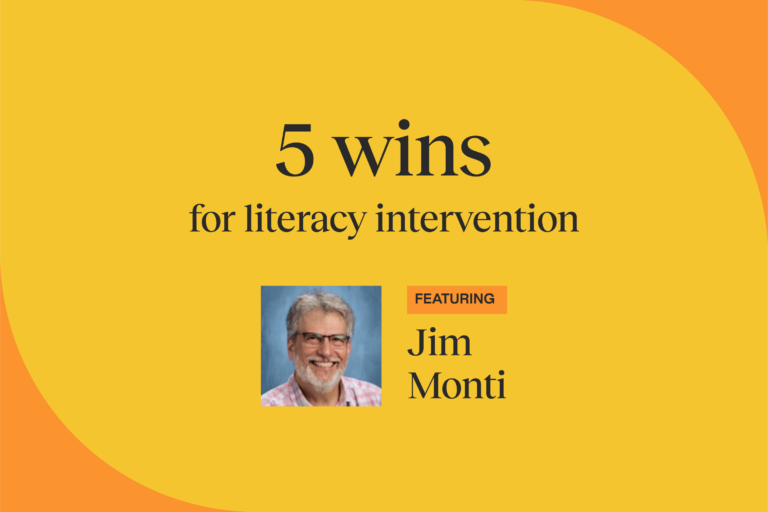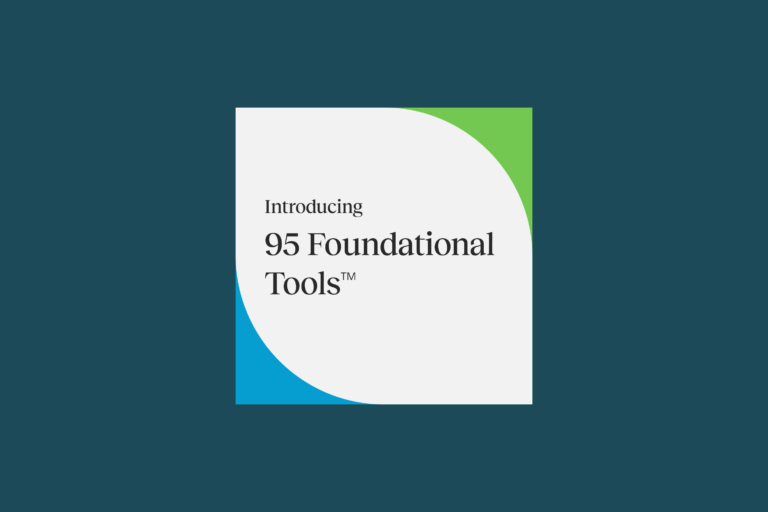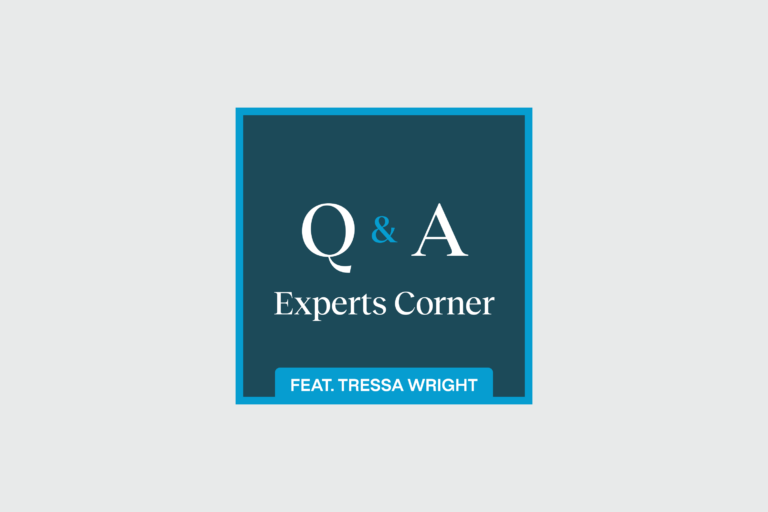The ultimate guide to morphological awareness

What is morphological awareness?
Most teachers have a good understanding of what morphology is and what morphemes are. But many aren’t sure how they should teach it or why. Dr. Deb Glaser, author of The Reading Teacher’s Top Ten Tools: Instruction that Makes a Difference, an IDA-accredited online comprehensive course designed to immerse educators in the science of reading, and creator of Morpheme Magic and Morpheme for Little Ones, says, teachers just need to build confidence in their knowledge and instruction. “Morphological awareness is something you can learn right along with your students,” she says. “The more you teach it, the more confident you will feel, and the more you will include morphology in your vocabulary and spelling lessons.”
Typically, in the early grades, students are working to master foundational reading skills and apply those in beginning level texts. However, in fourth grade, a distinct transition happens where texts become much more varied, complex, and challenging both linguistically and cognitively. In grades 3-8 students are now expected to use reading as a primary tool for learning new vocabulary, concepts and ideas. Texts now tend to contain ideas and vocabulary that exceed students’ experiences. In order to make this transition seamlessly, students need to be able to read fluently and to expand their knowledge and vocabulary from the text as well as refining their abilities to think critically and broadly.
Enter morphological awareness.
Morphological awareness is defined as the knowledge of word structure, including the formation of words from roots, prefixes, and suffixes—an understanding of how words can be broken down into the smallest units of meaning. Morphological awareness is critical to mastering reading skills, fostering the expansion of vocabulary, enhancing a depth in reading comprehension, and improving spelling proficiency.
Young children develop morpheme knowledge, producing single morphemes very early (Beringer, et al, 2010). The syntax of language—how words are used in sentences—supports this development (Carlisle, 2004).
When looking at morphology and the connection to spelling and reading, it’s important to have an understanding of how the English language has changed over time. When instructing on words that have irregular spelling patterns, it helps to have an understanding of its origin to explain why a word might not be spelled as it sounds.
Morphological awareness acts as a link between phonemic awareness and overall reading proficiency, and is highlighted in research as being one of the primary or most influential predictors of reading and spelling capabilities.
Why is teaching morphological awareness important?
As teachers of reading, your job is to create an awareness of morphemes. This awareness will strengthen student’s word recognition and spelling. It will help students develop richer and deeper vocabularies and improve comprehension and writing.
There are many ways to help kids learn words, but morphology helps to instill a fundamental understanding: word spellings aren’t always based on the sounds that we hear. English is a morphophonemic language. Morpho=meaning, and phono=sound. That means that we spell words not just based on the sounds that we hear within the word, but also based on units of meaning.
A great example of this is in the different way we spell words that are all representing something happening in the past tense. The words, fluffed, slammed, and pointed, all end in the suffix -ed. This tells us they are past tense words. But if you say them out loud, they don’t sound the same. Fluffed sounds like /t/ at the end, slammed sounds like /d/ at the end, and pointed sounds like /ed/ at the end. If we spelled these words as they sounded, we would lose the implied meaning—that they are actions that happened in the past.
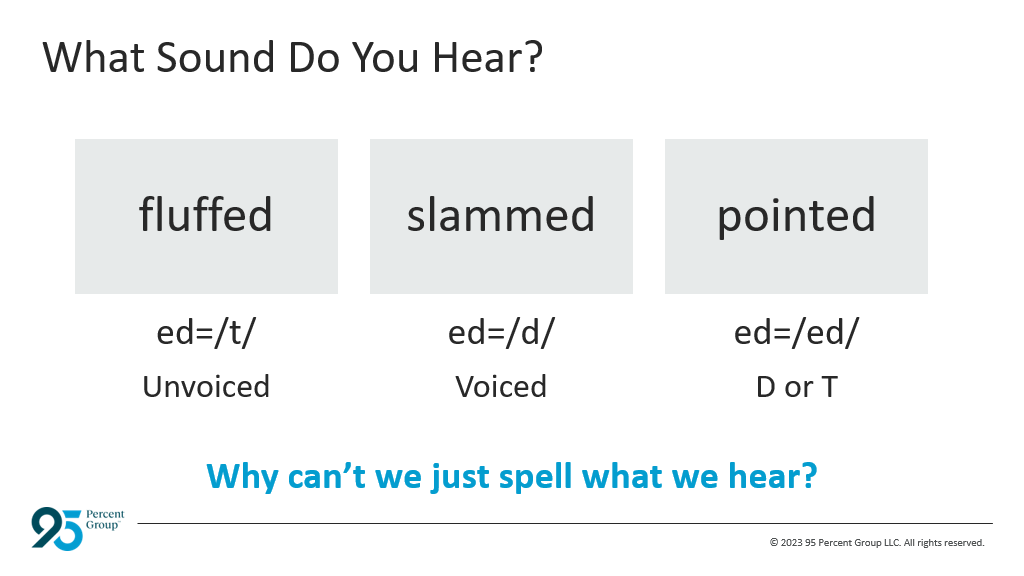
Studies have found that of phonemic awareness, morphological awareness, orthographic awareness (recognizing word and spelling formations), vocabulary, and rapid naming, morphological awareness was the only factor able to predict spelling skills and that morphological awareness and orthographic awareness contributed uniquely to predicting reading skills in second and third graders (Kim, Y. G., 2023). Morphological awareness increases students’ decoding and comprehension skills.
Morphology instruction has been shown to increase decoding and sight recognition skills by helping students master how units of meaning are spelled and pronounced. Additionally, morphological awareness increases students’ vocabularies exponentially, and thereby their background knowledge, because students are able to use knowledge of morphemes to recognize related words with shared meanings. An understanding of language structures also develops as students learn to recognize that morphemic parts signal parts of speech, or how the word can be used in a sentence.
So what’s the best way to incorporate morphological awareness instruction into your structured literacy lessons?
Let’s dive in.
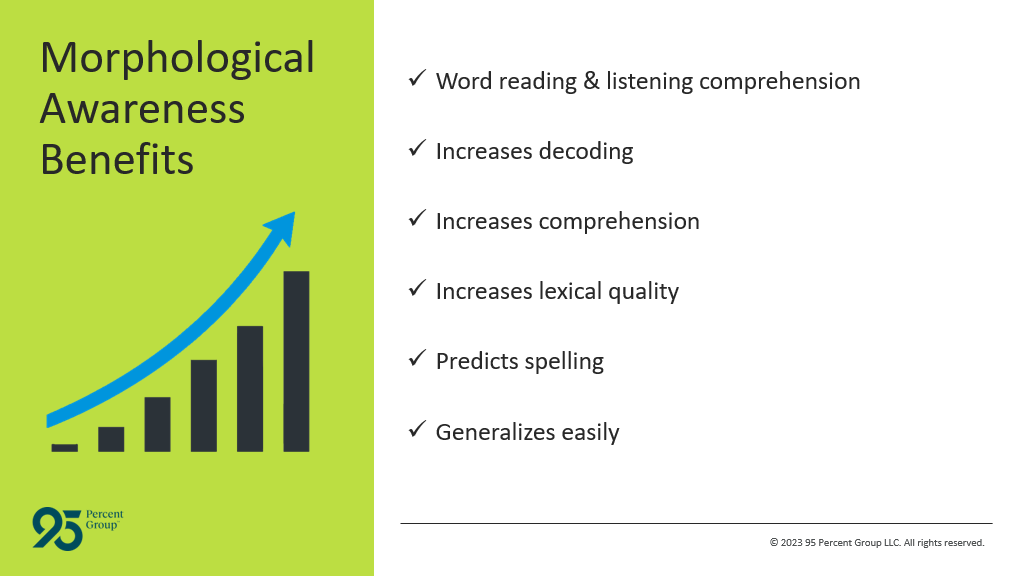
Developing morphological awareness
As with all foundational literacy skills, the way you instruct on them will depend entirely on the age of your students. Below you will find detailed information and suggestions for how to build morphological awareness in your students at every stage of learning.
For early learners (K-3)
For students in grades K-3, they are building the foundation of knowledge for decoding and encoding. As teachers you are focusing on many aspects of literacy instruction including phonemic awareness, phonics, handwriting, spelling, vocabulary and comprehension. According to Laura Stewart, Chief Academic Officer at 95 Percent Group, morphology instruction for students in K-3 should begin with compound words. This helps students to understand that words have parts that have meaning, and those parts come together to contribute to the overall meaning of the word.
At this stage, many of the words that K-2 students encounter in text are of Anglo Saxon or “Old English” origin. These words are one syllable words and are not spelled phonetically. They are the smallest percentage of our current language, but the most frequently used.
Looking for a great activity to get started with? Check out this resource from Reading Universe, called “Roll, Write and Read with Beginning Suffixes.”
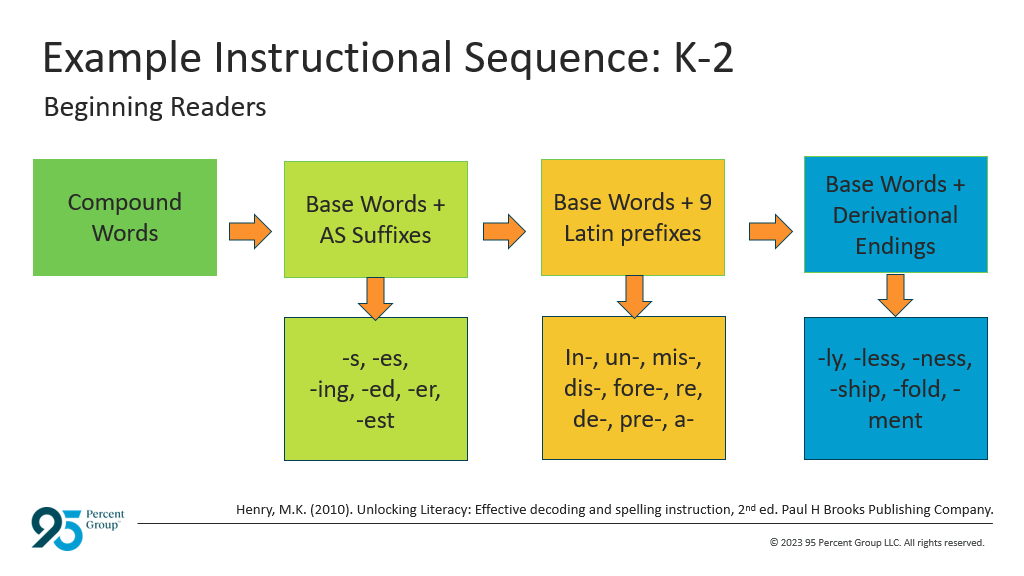
Upper elementary school (4-5)
Starting in third grade, we need to go deeper with our language instruction for students because they are going to experience an increase in the number of abstract and content specific words in text. These words will come primarily from Latin and Greek and since Latin and Greek tend to be phonetically regular, decoding them is fairly easy once students learn the syllable types and spelling patterns.
By fourth grade, 65% of words that students see in text will come from Latin. By providing explicit morphology instruction, we can give students strategies for expanding their vocabularies.
One activity that works well with upper elementary students is word webs. This activity shows students that by working with morphemes, they unlock the power of word expansion and help to take one word and generate multiple other related words using prefixes and suffixes.
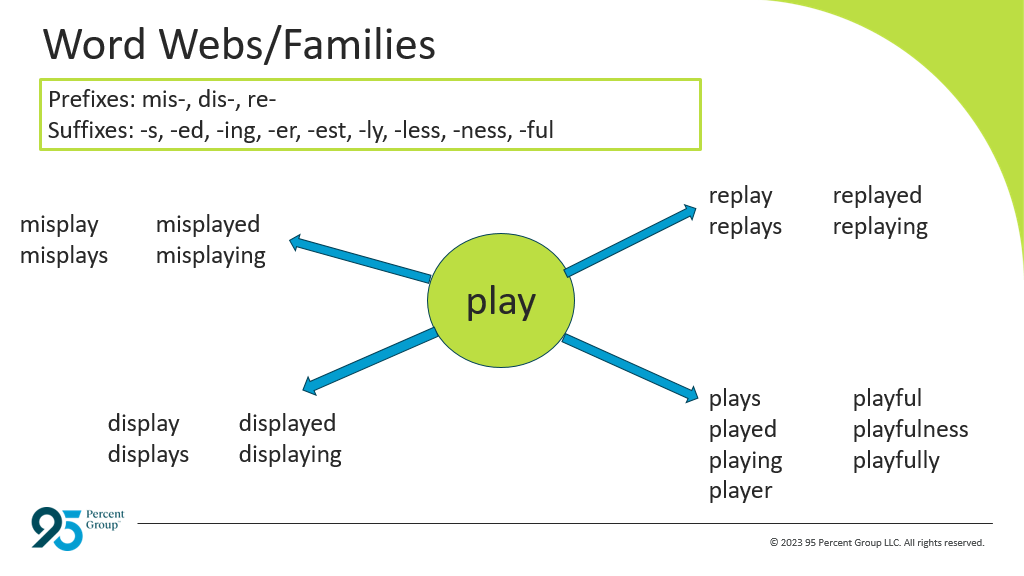
Middle school and beyond
As students get into middle school and beyond, the demands on their word and academic vocabulary knowledge will continue to increase. Providing morphology instruction alongside language, science and history courses can greatly increase your students’ chances of being able to deeply understand what they are reading and learning because of their ability to break down complex and unfamiliar words.
This instruction can be done with words choses from a text to study and analyze, or this work can be done with a specific morphology curriculum.
Here are some instructional strategies for teaching morphology with your secondary students:
- Review syllable types & common syllable division rules
- Begin with common prefixes & suffixes
- Look for common roots found in texts
- Explicitly teach roots & spelling patterns
- Sequence is based on frequency of occurrence
- Move from simple to complex
- Provide multiple opportunities for students to write and spell morphemes studied
Direct instruction on morphology is particularly helpful for highschool students who are struggling readers, including those with dyslexia.
Technology considerations
While we believe that explicit, science-based instruction is always the first, best step towards ensuring children have the foundational literacy skills they need, certain aspects of technology can be helpful in different instructional situations. Particularly if you are a teacher of upper elementary or secondary students, using technology to support your instruction or to support their guided and independent practice of these skills, can help to motivate and engage your students in a different way.
Here are some ideas on how technology can support your morphology instruction with students:
- Flipped classroom instruction: if you teach older students and use the flipped classroom instruction, you can offer your students a different experience in learning about morphology. An example of this might be having your students watch a brief video lesson at home and then preparing an activity they can do in class the next day to help guide and foster independent or peer-based practice to support their depth of understanding.
- Gamified learning: if you offer a gamified approach to morphology practice, students can identify a goal or challenge to meet, work to complete that challenge, and receive direct feedback which contributes to the way they experience and have agency in their learning. Technology can support this initiative by offering a platform for students to take ownership over creating their own challenges to work on.
- Project-based learning: using different technology platforms, older students can choose an aspect of morphology that they are particularly interested in and create their own project. This allows them to move through a process of researching a topic, analyzing information to decide what’s relevant, and then deciding how to best demonstrate their learning. Depending on the age of your students, some will need a lot of scaffolding for a project like this, but the potential for learning is there on many levels.
Conclusion
Having a depth and breadth of word knowledge is a known factor for reading and academic success. Teaching morphological awareness as a foundational literacy tool alongside phonemic awareness, phonics, and comprehension instruction is one of the most effective ways to help your students become engaged readers and critical thinkers.
If you are interested in any of the morphological resources we have at 95 Percent Group, please contact us today!
Resources:
- Chall, J. S. (1983). Stages of reading development. New York, NY: McGraw-Hill.
- Bowers, P. N., Kirby, J. R., & S. H. Deacon. (2010). The effects of morphological instruction on literacy skills: A systematic review of the literature. Review of Educational Research, 80, 144–179. doi:10.3102/0034654309359353
- Kim, Y. G. (2023). Executive Functions and Morphological Awareness Explain the Shared Variance between Word Reading and Listening Comprehension. Scientific Studies of Reading. DOI: 10.1080/10888438.2023.2195112.

